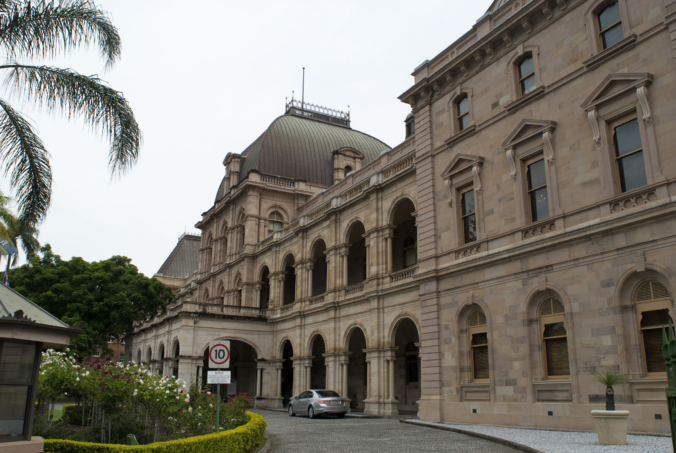Introduction: Forum Non Conveniens in Practice
Australian forum non conveniens principles took centre stage when the Supreme Court of New South Wales decided Isaacman v King [No 2].[1] This is the kind of case that tempts one to say ‘nothing to see here’, and yet it richly rewards a closer look.
On a conventional application of Voth v Manildra Flour Mills[2] — the leading authority on forum non conveniens in Australia — Garling J stayed proceedings that attempted to litigate a New York relationship dispute in Sydney, being ‘well satisfied’ that the NSW Supreme Court was a clearly inappropriate forum.[3]
The reasons, though brief by design,[4] illuminate the transaction costs of jurisdictional overreach,[5] show how the Voth framework handles an extreme set of facts, and offer a careful case study for empirical debates about Australian ‘parochialism’ in jurisdictional decision-making.

The Factual Background: Testing Jurisdictional Limits
The facts almost read like a hypothetical designed to test the outer limits of exorbitant, or long-arm, jurisdiction.
A US biotech executive residing in New York sued his former partner, an Australian marketing consultant, in the NSW Supreme Court for alleged negligent transmission of herpes simplex virus during their relationship in New York.
The relationship began and ended in New York; the alleged transmission occurred there; the plaintiff’s diagnosis and treatment took place there; and the defendant, though Australian, lived overseas and was only ordinarily resident in Victoria when in Australia.
The plaintiff had a four‑month period in 2022 split between Sydney and Melbourne, with visits to Queensland, while exploring business opportunities for skincare ventures. He pointed to social friendships in Sydney and his one-off membership of the North Bondi Returned and Services League (RSL) Club.[6]
None of this impressed Garling J as a meaningful link to New South Wales. As Garling J readily observed in the case’s earlier procedural judgment, there was ‘no connection whatsoever between either of the parties, and the pleaded cause of action and the State of New South Wales.’[7]
The RSL club membership did not establish ‘any connection at all with the forum’.[8] The pleading itself underscored the foreignness of the dispute: by notice under New South Wales’ court rules,[9] the plaintiff relied on New York law, in particular New York Public Health Law § 2307, alongside common law claims available under New York law.[10]
Applying Forum Non Conveniens: The Court’s Analysis
The Voth Test Framework
The forum non conveniens analysis proceeded squarely under Voth. Garling J recited the familiar principles:
- the onus lies on the defendant;
- the question is whether the local court is a clearly inappropriate forum, not whether an alternative is more convenient;
- it is relevant that another forum can provide justice; and
- the need to determine foreign law is not conclusive but is a significant factor.[11]
The only explicit nod to the English test in Spiliada Maritime Corporation v Cansulex Ltd[12] came through the High Court’s own endorsement in Voth of Lord Templeman’s aspiration for brevity in such applications. [13]
Yet Garling J noted that an issue arising in oral submissions required further written submissions, precluding an ex tempore disposition, but nonetheless kept the reasons concise.[14]
Connecting Factors Analysis
On the facts, the connecting factors all pointed away from New South Wales. The conduct giving rise to the claim, the governing law, and the evidentiary base were in New York. Neither party had assets in NSW, so any judgment, whether for damages or for costs, would have to be enforced elsewhere, compounding expense.[15]
Garling J accepted, and the parties did not dispute, that New York courts could exercise in personam jurisdiction over the defendant; that acceptance underpinned the conclusion that there was another forum where the plaintiff could ‘obtain justice’.[16]
The upshot was decisive but orthodox: the Supreme Court of New South Wales was a clearly inappropriate forum, and the proceedings would be stayed.[17]
The Conditional Stay Order
The conditional order deserves to be recorded with some precision. The stay was to take effect seven days after publication of the judgment.
Within that same seven‑day period, the defendant was to file and serve a written undertaking that, if the plaintiff brought civil proceedings in the State of New York concerning the subject matter of the NSW suit, she would not plead any New York limitations defence, provided the plaintiff commenced in New York within three months of the stay taking effect and provided the claims were not statute‑barred when the NSW proceeding was commenced.[18]
This neutralised limitation prejudice, as long as the plaintiff did not delay commencing proceedings, and ensured practical access to the natural forum. Garling J also ordered the plaintiff to pay the costs of the forum non conveniens application.[19]
Ancillary Matters
Two ancillary applications were left untouched. A cross‑vesting motion seeking transfer to the Supreme Court of Victoria and a late‑filed non‑publication motion were not determined.[20]
Given the stay, it was not appropriate to go on to decide further issues between the parties. Garling J added that ordering a transfer could impinge on the plaintiff’s own choices about where to proceed next; and with the matter stayed, non‑publication orders served no useful purpose.[21]
Forum Non Conveniens Doctrine: Broader Implications
Academic and Comparative Perspectives
Situating Isaacman v King [No 2] in the post‑Voth jurisprudence helps explain both the ease and the limits of the result.
Voth’s ‘clearly inappropriate forum’ test was announced as only a slight departure from the English Spiliada test,[22] but, as Richard Garnett’s early survey of the doctrine shows,[23] its operation had been variegated.[24]
In the years immediately after Voth, Australian courts often refused stays where there were meaningful Australian connections — even if the governing law or much of the evidence was foreign — and sometimes gave generous weight to local juridical advantages.[25]
Mary Keyes’ analysis in the Australian family law context underscores why this felt unpredictable: a forum‑centric test with broad judicial discretion risks certainty, predictability and cost.[26] Understandably then, Keyes argues for an explicitly comparative, Spiliada‑style inquiry that focuses on effective, complete and efficient resolution, the parties’ ability to participate, costs and enforceability.[27]
At the same time, the High Court tempered Voth in specific contexts. In Henry v Henry,[28] the majority effectively created a presumption in favour of a stay where truly parallel foreign proceedings between the same parties on the same controversy were already on foot, explicitly invoking comity and the risks of inconsistent outcomes.[29]
In CSR Ltd v Cigna Insurance Australia Ltd,[30] the High Court went further. Even without identity of issues, the ‘controversy as a whole’ analysis could render local proceedings oppressive where their dominant purpose was to frustrate access to relief available only abroad.[31]
These qualifications that, outside the special case of parallel litigation, Voth directs attention to the suitability of the local forum in its own terms. But, where duplication looms in the form of parallel proceedings, the analysis necessarily broadens. That broader, comparative posture is also what Ardavan Arzandeh shows Australian courts actually do in practice, despite Voth’s formal language.[32]
Isaacman v King [No 2] belongs to a different, more straightforward strand in that story: the ‘little or no connection with Australia’ cases in which stays have been ordered because the action and the parties’ controversy are overwhelmingly foreign.[33]
Unlike the contested margins Garnett identifies, there was no pleaded Australian statutory right of a kind sometimes relied on as a juridical advantage; no contest about the availability of a competent foreign forum; and no tactical race between parallel proceedings. Garling J canvassed the classic connecting factors, noted the New York law pleaded, recorded the practical burdens of proof and enforcement, and concluded that New South Wales was clearly an inappropriate forum.
That emphasis on concrete, case‑specific connections and on consequences for the conduct and enforcement of the litigation fits both Keyes’ call for structured, predictable decision‑making and Arzandeh’s demonstration that Australian courts, in substance, weigh the same considerations as Spiliada.[34]
Two implications follow. First, the decision is a neat instance of Voth doing exactly what it was designed to do when the forum is only nominally engaged. It offers little purchase for testing the harder comparative question whether, at the margins, Voth’s rhetoric yields different outcomes from Spiliada’s ‘more appropriate forum’ inquiry. That is consistent with Arzandeh’s view that the supposed gap is, in practice, vanishingly small.[35]
Transaction Costs of Inappropriate Forums
Secondly, it gives texture to the practical burdens that inappropriate forum choices impose.
Expert evidence on New York law would have been required. Witnesses and records are in the United States; neither party’s assets are in New South Wales. The court itself, even in this ‘easy’ case, could not resolve the application wholly on the basis of oral submissions because an issue warranted further written argument.
Those are precisely the private and public costs Keyes highlights as reasons to favour a clearer, more comparative framework ex ante, rather than leaving calibration to ex post discretion.[36]
Lessons for Legal Practice
There is, then, a narrow lesson and a broader one. Narrowly, Isaacman v King [No 2] confirms that Australian courts will not entertain a claim whose only local anchors are social relationships and what amounts to a meal‑discount club card.
Broadly, it supplies one more controlled observation for comparative and empirical work: an extreme outlier that aligns with ‘no connection’ line of authority.[37]
It also leaves open — indeed, usefully highlights — the need for data drawn from genuinely contested cases, where juridical advantage and practical adequacy are engaged on the evidence, if we are to assess how far Voth diverges, in practice, from its common law counterparts.[38]
Conclusion: When Forum Non Conveniens Works as Intended
Isaacman v King [No 2] therefore earns its place not because it breaks doctrinal ground, but because it shows the doctrine working as intended.
The plaintiff’s Sydney friendships and RSL membership could not anchor a transatlantic dispute in Phillip Street. New York law, evidence and enforcement pointed inexorably elsewhere. And, a conditional stay ensured that the plaintiff would not be procedurally disadvantaged by being sent to the forum where the dispute belongs.
If some forum non conveniens applications can be resolved quickly,[39] this was not one of them. But it was, in the end, a straightforward exercise of judicial discipline about where litigation should be done.
[1] [2025] NSWSC 381.
[2] (1990) 171 CLR 538 (‘Voth’).
[3] Isaacman v King [No 2] (n 1) [50].
[4] Voth (n 2) 565.
[5] See Andrew Bell, Forum Shopping and Venue in Transnational Litigation (Oxford University Press, 2003; J J Spigelman, ‘Transaction Costs and International Litigation’ (2006) 80(7) Australian Law Journal 438, 441–3.
[6] Ibid [22].
[7] Isaacman v King [2024] NSWSC 1291, [85]. The earlier judgment dealt with preliminary procedural matters including the plaintiff’s failed attempt to proceed pseudonymously.
[8] Isaacman v King [No 2] (n 1) [41]–[42].
[9] Uniform Civil Procedure Rules 2005 (NSW).
[10] Isaacman v King [No 2] (n 1) [14], [45]–[46].
[11] Ibid [35]–[36].
[12] [1987] AC 460.
[13] Isaacman v King [No 2] (n 1) [37], quoting Voth (n 2)565. One wonders how often Lord Templeman’s aspiration is realised.
[14] Isaacman v King [No 2] (n 1) [37]–[38].
[15] Ibid [43], [46]–[49].
[16] Ibid [47].
[17] Ibid [39]–[51].
[18] Ibid [4], [56].
[19] Ibid [56].
[20] Ibid [7], [52]–[53].
[21] Ibid [8], [52]–[55].
[22] Voth (n 2) 558.
[23] Richard Garnett, ‘Stay of Proceedings in Australia: A “Clearly Inappropriate” Test?’ (1999) 23(1) Melbourne University Law Review 30.
[24] Cf Ardavan Arzandeh, ‘Reconsidering the Australian Forum (Non) Conveniens Doctrine’ (2016) 65 International and Comparative Law Quarterly 475.
[25] Garnett (n 23) 39–48.
[26] Mary Keyes, ‘Jurisdiction in International Family Litigation: A Critical Analysis’(2004) 27 UNSW Law Journal 42, 63–4.
[27] Ibid.
[28] (1995) 185 CLR 571.
[29] Ibid 590–1; Garnett (n 23) 52–4.
[30] (1997) 189 CLR 345.
[31] Ibid 400–1; Garnett (n 23) 57–9.
[32] Arzandeh (n 24) 485, 486.
[33] Garnett (n 23) 45–6.
[34] Keyes (n 27) 63–4; Arzandeh (n 24).
[35] Arzandeh (n 24) 491.
[36] Keyes (n 27) 59–60.
[37] Garnett (n 23) 45–6.
[38] On the need for empirical research in this area, see Christopher A Whytock, ‘Sticky Beliefs about Transnational Litigation’ (2022) 28(2) Southwestern Journal of International Law 284.
[39] Spiliada (n 12) 465.
About the Author

Dr Sarah McKibbin is a legal academic at the UniSQ specialising in private international law and legal history. She teaches Equity and Trusts and its JD counterpart, Advanced Equity and Trusts, as well as the private international law suite of electives. Her PhD (2020) examined the public policy exception in Anglo-common law private international law, with current research focusing on jurisdictional challenges in transnational litigation.


















Recent Comments